In this two-part series, we will be highlighting 14 tips and tricks to aid in Business Central’s productivity and the system’s ease of use. In this post, we’ll review the following tips:
- Using Analysis Features
- Quickly Pay Vendors
- Collections Tips
- Copy and Paste From Excel
- Edit in Excel
- Use Outlook Plugin
- Searching and Filtering Data
Using Analysis Features
Analysis Features allow you to Pivot data in lists within Business Central to report on what you need.
Analysis Features sometimes need to be turned on in Feature Management. To do this, use your lookup and enter “Feature Management”, locate the feature, and enable it. In updated instances of Business Central, it should already be enabled.
As an example, I see the Analyze Button at the top of lists that it is turned on, such as General Ledger Entries:

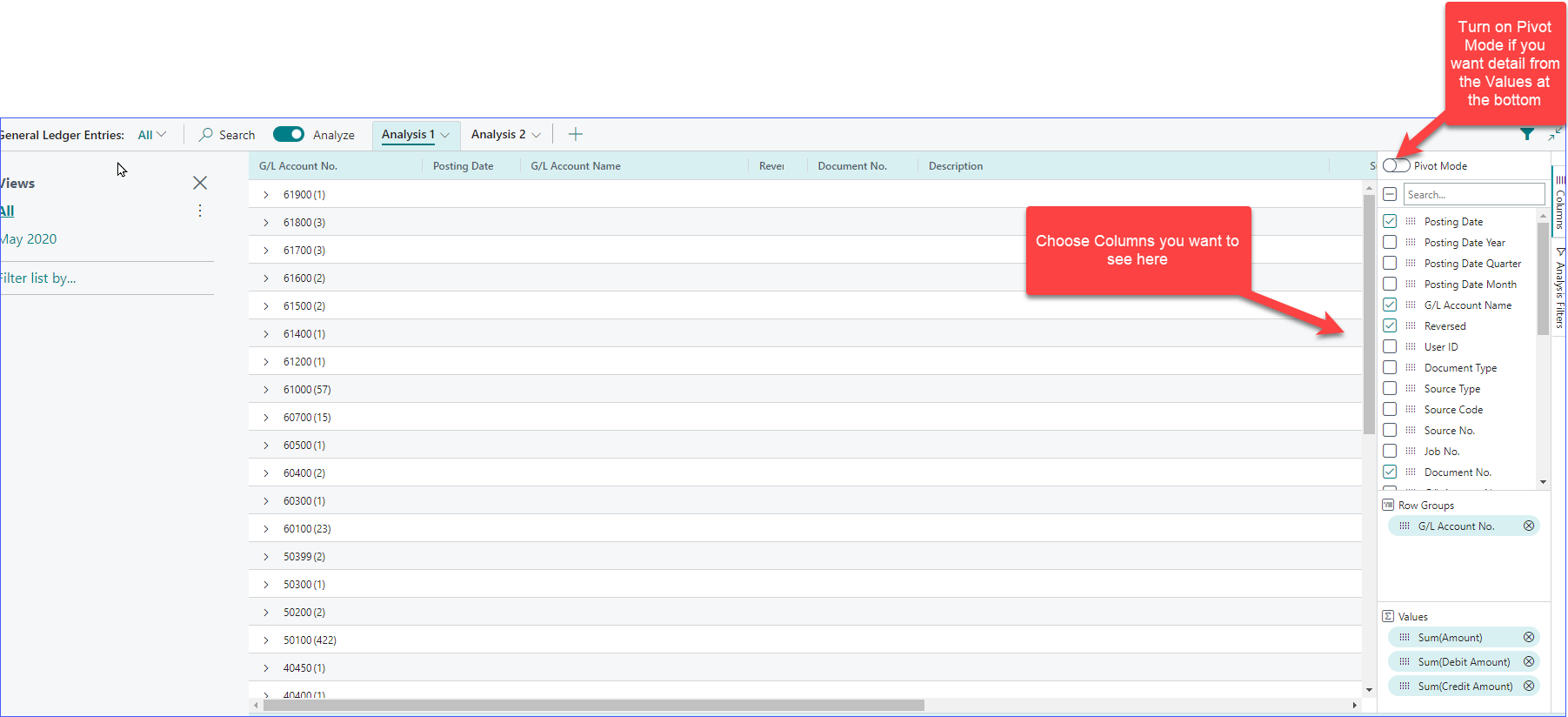
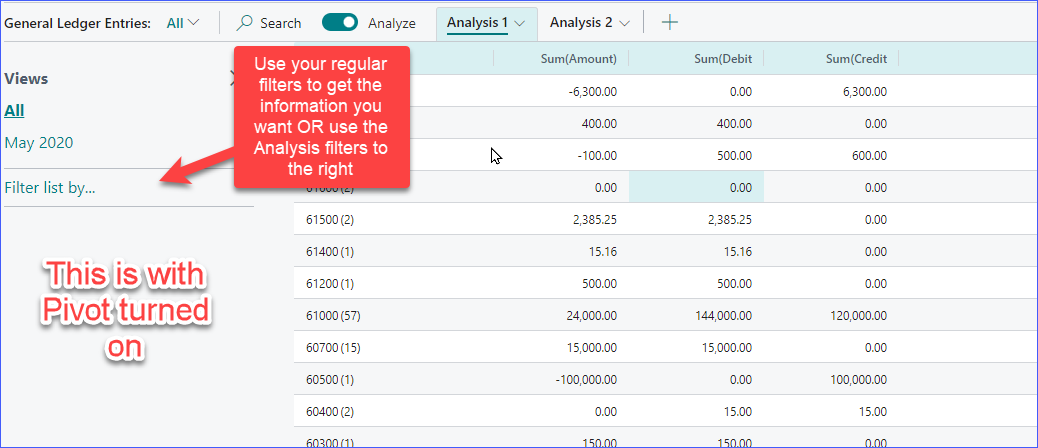
As you can see, this is a valuable research tool!
Quickly Pay Vendors
For a listing of vendor invoices currently due, there are several options. I’ve highlighted my two favorite below:
- Pull up the list “Vendor Ledger Entries”
- Filter to a due date and grab all that are prior to the date you want, such as >01/31/2024 which would return all invoices and credit memos due before 01/31/2024.
- For a list of search wildcards for filtering, see the section below on searching and filtering data.
- Filter to “Remaining Amount” <>0 which means what is left owed does NOT equal zero
- In other words, filter out any that have already been paid
- OR you can filter on the “OPEN” column to Open = Yes
- SAVE your filters so you can easily get back to this – see Searching and Filtering Data below to learn how
- The sort by vendor or due date, send the list to the person who decides who to pay, etc., but here is a sample list:
![A screenshot of a computer
Description automatically generated]()
- You can also simply click on Outstanding Vendor Invoices KPI on the home screen – you can see this when your Role is Business Manager:
Now that we have our list, we can generate and setup the payments quickly.
To do this, use the three dots after the first column and choose “Select More”
Now, simply mark the invoices you or the approver has agreed to pay. You can even mark the credit memo and unapplied payments so you get exactly what you owe the vendor
Click “Create Payment” and this will add this payment in the Payment Journal. Whichever bank you choose during the “Create Payment” phase and all of the payments are set and applied to the invoices, credit memos, or payments you have chosen.
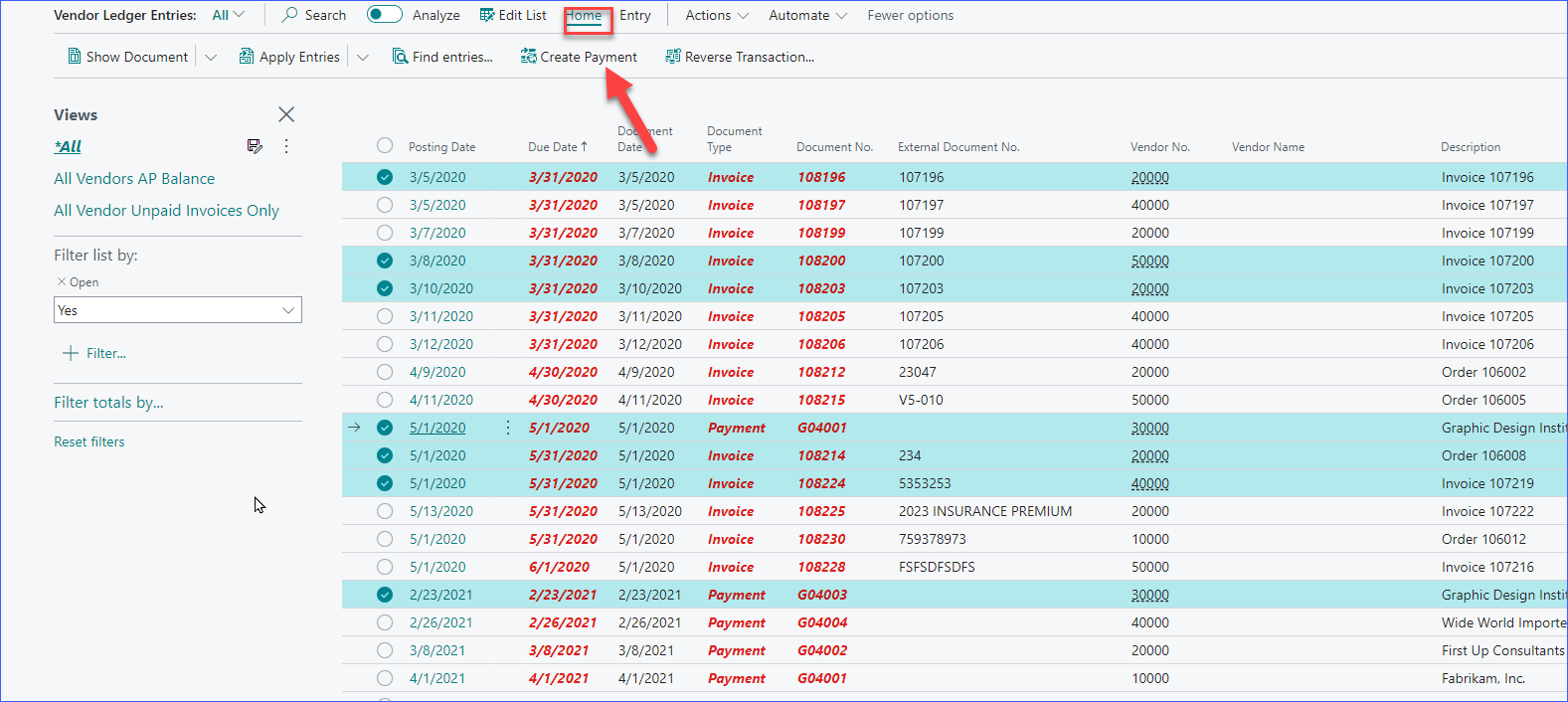
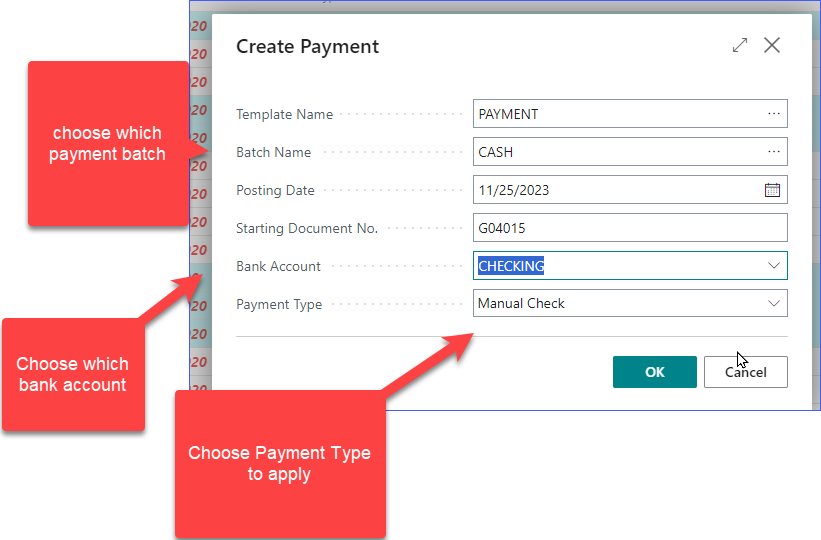

You can now see under Apply that the payments are applied to the documents I chose in the previous step. All that is left to do is print the checks or process the EFTs/ manual checks and post the batch!
Collections
Like Vendors, Customers also have a “Customer Ledger Entries” list which can be filtered to what is past due or what is due. If your Role is Business Manager, you even have an Overdue Sales Invoice metric on the home screen that you can drill into to see who is now past due. Otherwise, go to “Customer Ledger Entries” and filter to what you want to see.
In the “Customer Ledger Entries” list you can filter to anything due before a certain date, where the Remaining Amount does not equal zero and the Open status is “Yes.”
Sort by customer and highlight the customers you want to communicate with. You can create a reminder and charge finance charges all from here. There is basic setup to Reminders and Finance Charges, Steve Chinsky, a UG Expert, has a great blog on this.
These reminders serve as specific communication on all invoices, credit memos, and payments that are outstanding as of the date.
You can also send statements and schedule statements to run. There are two statement areas, Customer Statement and Customer Statements – they produce different reports so try each of them before you decide on a format. You CAN alter the format the same as most reports in Business Central.
I prefer “Customer Statements” because the report tends to display a little more easy to read. You have a lot of control here:
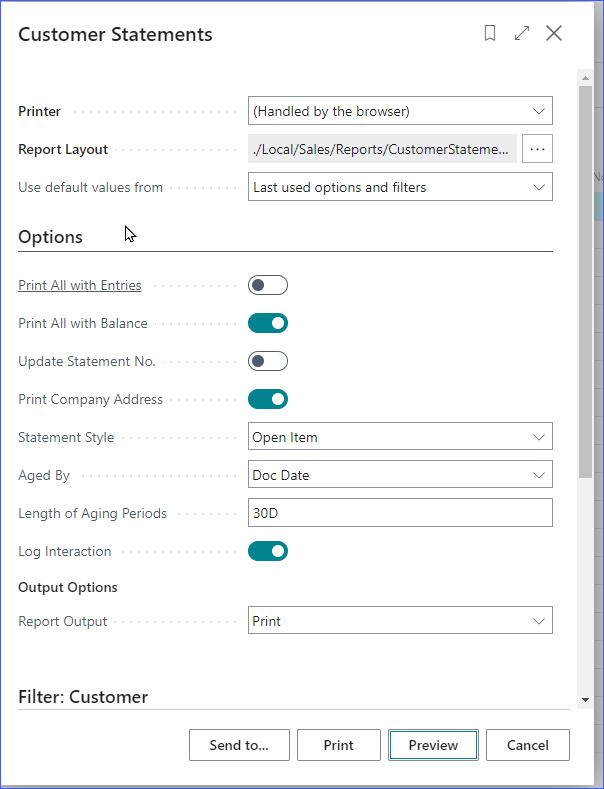
For much more on collections, check out Microsoft Learn.
More information about a customer’s payment history can be found in their Customer Card. I can see clearly that this customer routinely pays me negative 19 days – in other words, they usually pay me 19 days early. Here is where I can see and report on credit usage, etc.
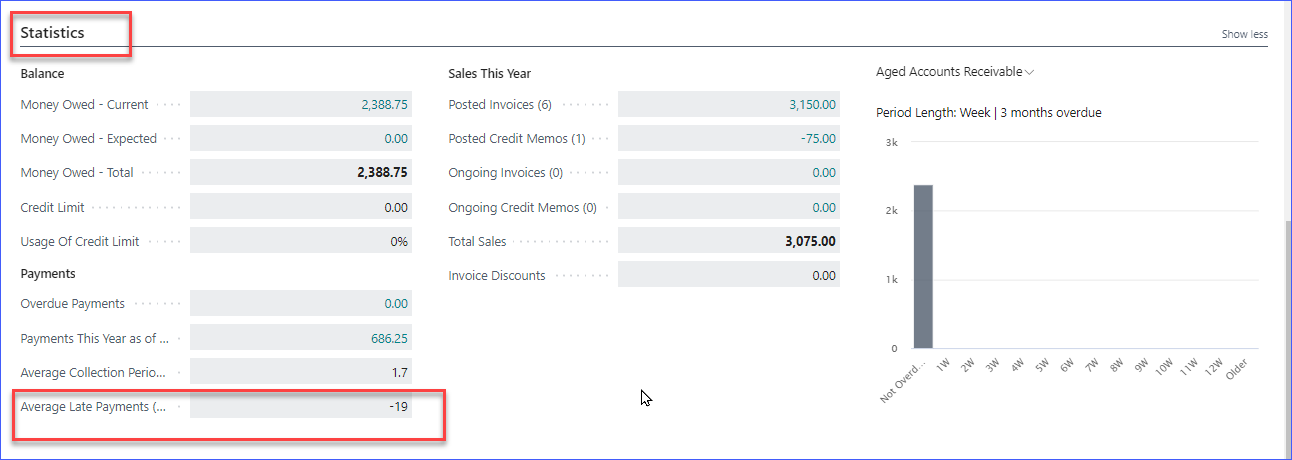
Copy and Paste From Excel
There are a number of ways to integrate with Business Central and get transactions and records loaded quickly. One of the most user-friendly is the copy and paste functionality from Excel.
There are a couple of caveats:
- The format of the copy and paste is completely dependent on the columns on the end-users screen and no other end user. Therefore, if you have users who have each customized their fields and screens then the copyand paste one user uses will NOT work for another user.
- You cannot rearrange anything from the copy and paste fields – the best way to ensure success is to enter one row of data by hand and the use CNTRL-C to copy that row and then use CNTRL-V to paste it into Excel.
- You now have the complete format you can use to copy and paste. I recommend this being the very first step in copying transactions in order for you to have greater success during the paste into Business Central.
Here is how to copy and paste a Journal Entry (bear in mind you can copy and paste into ANY lines of ANY transaction):
- In the transaction, be on the Lines section of the transaction, and on the first line, press CNTRL-C to copy a line
- Open Excel and hit CNTRL-V to paste
- Copy down all data in each column. Change nothing but the data area and use only existing records like accounts, items, vendors, customers
- It will error if the record does not already exist
- Highlight all the data area
- Don’t copy header columns
- Copy just the data by hitting CNTRL-C
- Use the three dots and delete the existing line in order to paste on that line of data
- If you want to leave that line go to the next line and click on the arrow (it won’t do anything, but click here for best success)
- If you want to leave that line go to the next line and click on the arrow (it won’t do anything, but click here for best success)
- Now, all you need to do is complete the transaction by posting or edit it a bit and then post
Edit in Excel
Edit in Excel is another form of integration and mass-change for transactions. Edit in Excel will allow you to move the transaction to Excel and finish it before publishing it back to Business Central.
You will need to install the tool for connecting to Business Central.
You must have permissions to the environment in order to publish it, but after that, it’s kind of a piece of cake!
Let’s look at a Journal Entry again – though this method will work with almost all transaction lines.

The transaction then opens in Excel for you to edit or add to and when done you publish your changes.
Note: Sometimes you have to hit publish but you won’t see changes until you refresh your screen in Businss Central.
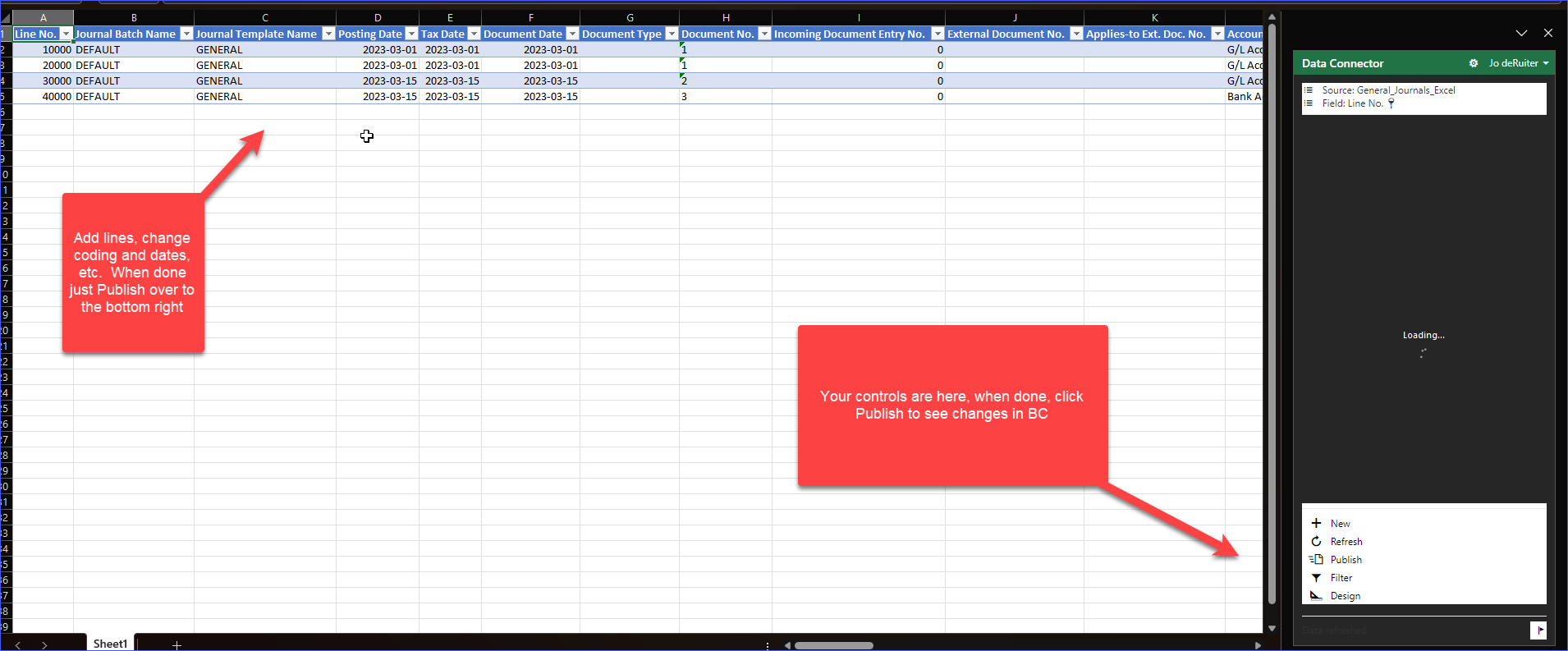
Try it out!
Using the Outlook Plugin
Like Excel, there is a plugin for Outlook that can help increase productivity.
You can download and read about it at Microsoft Learn.
Be sure you’ve linked your customer or vendor emails to their master records in Business Central using Contacts.
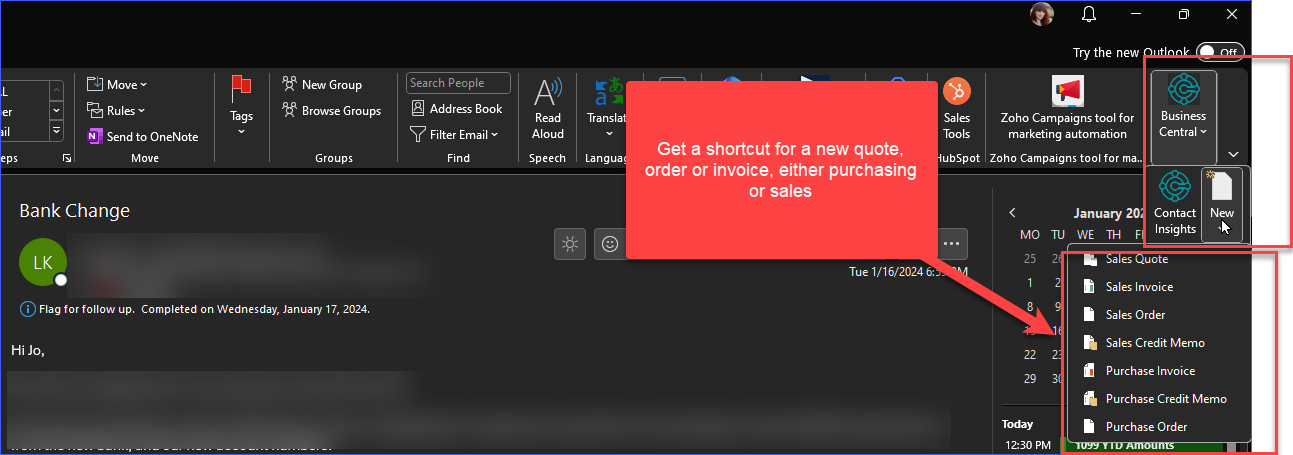
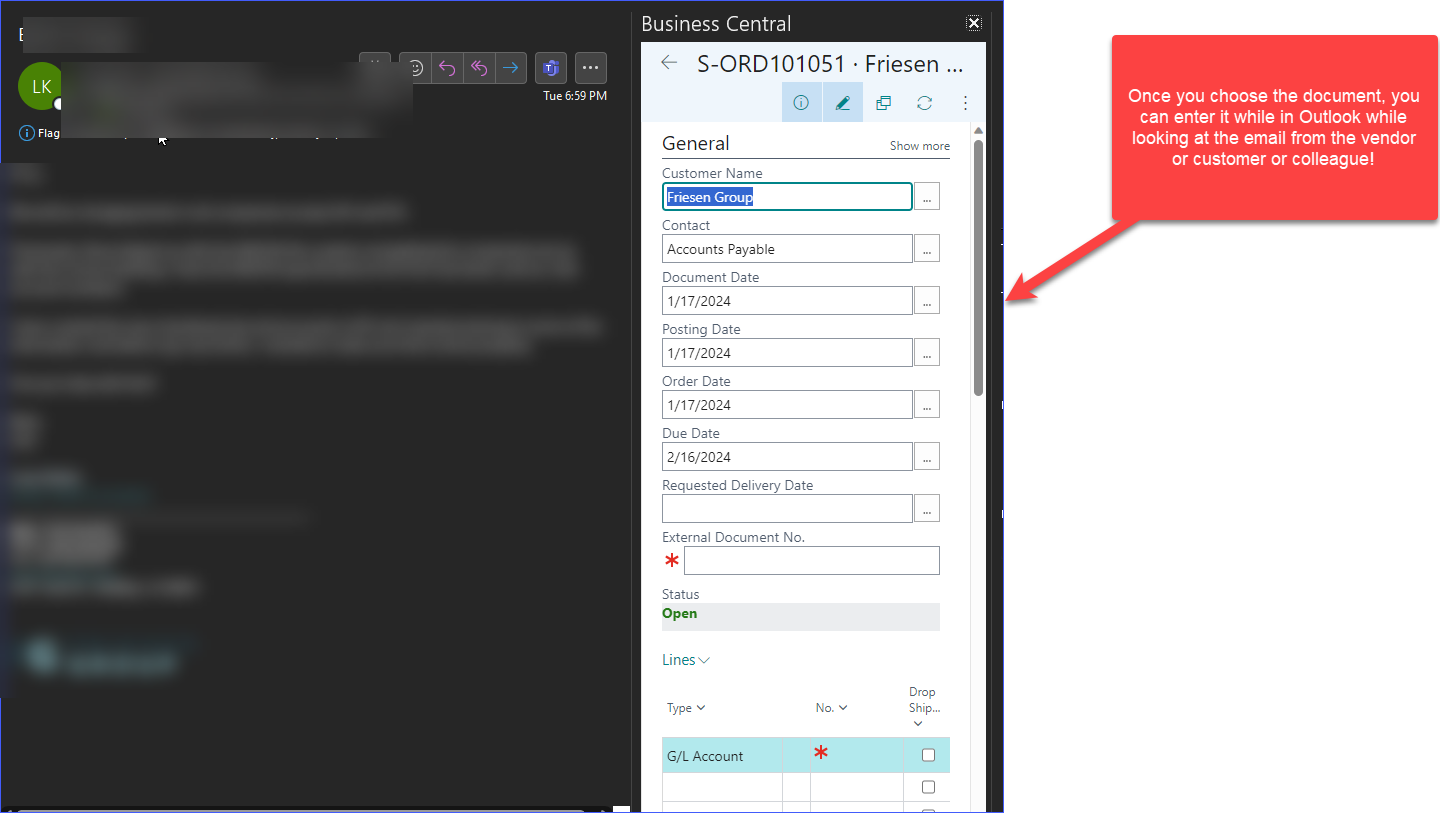
I chose Contact Insights instead of New in the plugin and I can see their attachments, their balances, and more. Here is a sample:
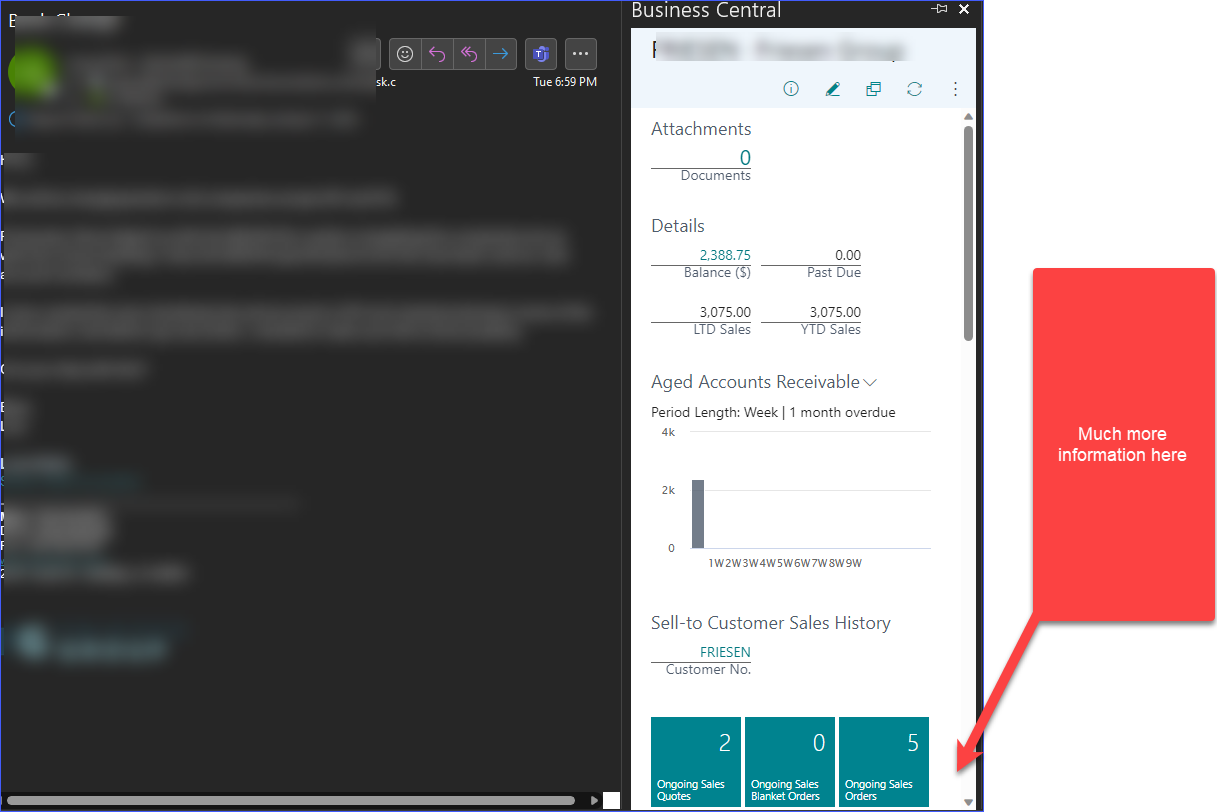
Searching and Filtering Data
In Business Central, a ton of reporting can be done from Lists. Lists are prolific in Business Central. Here are examples of lists:
- General Ledger Entries (a most valuable reporting and research and correction spot)
- Posted Sales Invoices
- Customer Ledger Entries
- Vendor Ledger Entries
- Item Ledger Entries
- Purchase Orders
In other words you have the easy ability to quickly find anything you are looking for in order to research it or edit it.
Sorting
First, we’ll discuss sorting. In any list area, you can sort by a column by clicking the header of the column – ascending and descending. This is an easy way to find what you are looking for if it is a small list.
Searching
To search alone on the one criteria, find the “SEARCH” field, generally at the top of the list, and type in the data you are looking for. It’s important to note that this provides just one criterion. If that’s all you need, this is the easiest way to search. Searching is NOT generally case-sensitive.
This will help you find just about anything. For instance, in Posted Sales Invoices, use this to find all invoices for a customer by typing in the customer ID in the search box. To find a specific invoice, just type in the invoice number, etc. This search looks a many fields in the transaction but you may need to personalize your screen to see that field.
Filtering
At the top of a list is a filter button, like this:

Click it to green when you want to see the filtering views and click it to clear if you don’t want to see the filtering views.
To fine-tune your search and filter results, know that you can choose any column and type in or choose the criteria you want to search. An easy way here is to be on a record similar to all the records you want to see and use the “Filter to This Value” function in the drop-down at the column header.
The searching is sensitive, so if you are looking for a word value – like a specific description on the General Ledger Entry – then know that the filter IS case-sensitive depending on how you search. So, the word receipt or Receipt can be found without worry of complication, but if you need to search based on case, you can.
Here you can employ wildcards to replace aspects of what you are searching. For instance, I would use a pipe (|) to say ‘and’, as in I want to see transactions from accounts 1200 and 1300. In my filtering, I would choose the column “GL Account” and filter to those two accounts by typing in the filter 1200|1300 and then, I have the transactions I’m looking for.
For a full list of wildcards please see Microsoft’s information here.
If this is a filtered list that you want to get back to, then you can SAVE the filters:
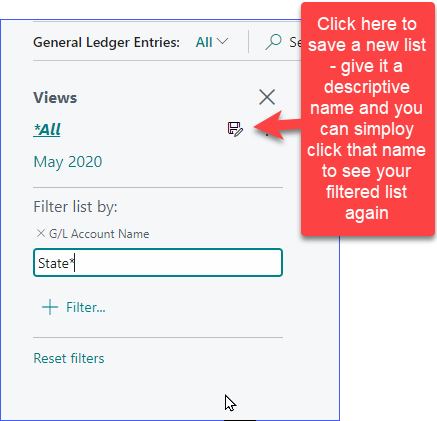
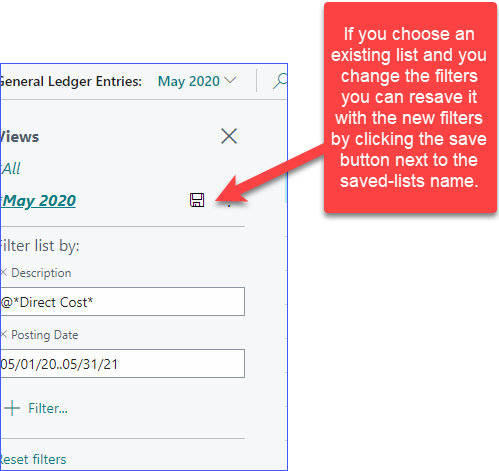
Once you have your filtered list you can shoot it out to Excel or perform any corrections you need to (or are allowed to) perform in that list.
Stay tuned for part two, which will offer seven more tips for Business Central productivity. In that post, we’ll cover the following tips:
- Data Entry Tips
- Use the Calculator in Numeric Fields
- Enter Dates with Keyboard Shortcuts
- Quickly Change Companies
- Attach Notes and Files
- Renumbering Master Records
- Correcting Entries
The post 7 Business Central Tips to Enhance Productivity appeared first on Dynamics Communities.




